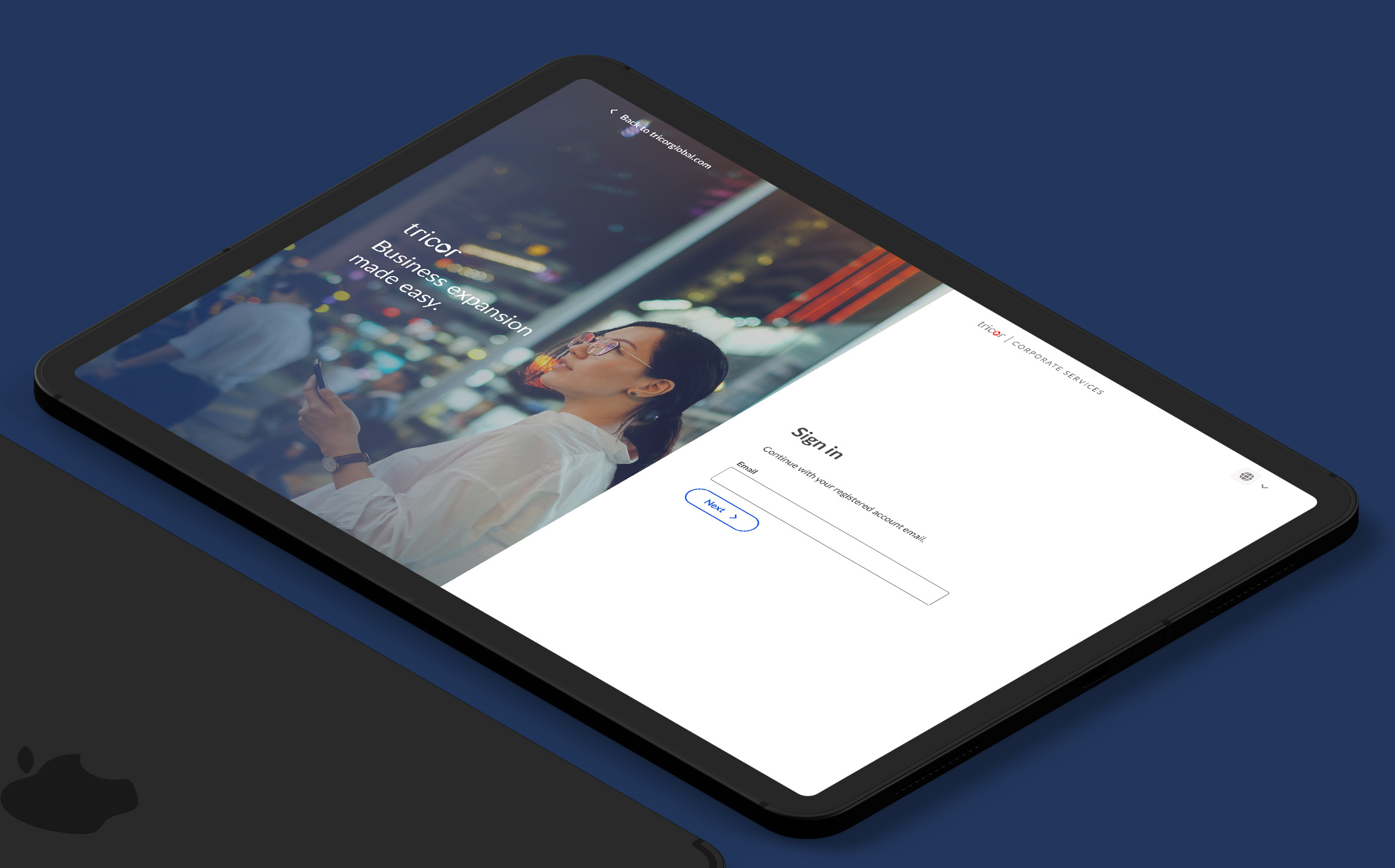Project Background
Tricor is the leading business expansion specialist in Asia, with business expertise in corporate investing, HR and strategic business advisory.
Tricor's fast-growing expansion across multiple sectors meant that they would acquire and inherit a diverse range of products, each with its own set of unique systems, coding languages and user interfaces.
Understanding the problem
With broad-ranging visual and technical implementations across multiple linked SaaS products, siloed teams relied on various ad-hoc off-the-shelf systems with no common cross-compatibility, brand consistency or user experience.
As manual services move towards a self-service model, jumping across many unique platforms to complete a single task led to confusing and often jarring customer experiences. Poor cross-platform experience, along with the heavy reliance on manual data input, presented two clear opportunities.
Automation
How might we service clients better while reducing our reliance on manual work?
Consistant experiences
How might we provide a consistent experience amongst an overwhelming number of independent platforms?
Discovery
We kicked off our design system discovery phase. Interviewing a broad selection of stakeholders and development teams across the organisation and end users to gain a holistic understanding of the products and what teams need from a design system.
We collected screens of Tricor products out in the market to highlight visual inconsistencies. We convened designers, engineers, and critical stakeholders in workshops to take stock of all interface elements in production to see design debt and the most commonly used elements.
Core principles
We to define a set of core principles, along with a flexible set of styles, components and patterns to provide a framework for making and evaluating design decisions with a focus on simplicity, consistency, purpose, usability, and flexibility.
Less is more
Great design makes the complex appear simple. This is achieved by removing anything unnecessary to the whole. Minimalist form and function can place the maximum emphasis on the users' goals. Simplicity can reduce production costs and provide leaner solutions that adapt faster to changes in the marketplace. Less is more!
Stay focused
Where possible, look to reduce the cognitive load on users to help them maintain focus. Limit decision points and be single-minded in processes. Don’t overwhelm users with too much information all at once. Build a visual hierarchy that allows a user to scan for the details they need. Contrast here is vital - because when everything is important, nothing becomes important.
Accessibility and usability
At its core, this is about taking the complex and making it intuitive. It’s about communicating to users in a manner free from jargon and industry speak. It’s about structuring content to be available to anyone, anywhere and on any device. Usability is fundamentally about designing with empathy. Aiming for inclusiveness, in turn, provides us with the broadest possible audience. The goal here is always to design solutions that don’t require a handbook.
Consistently consistent
Consistency is a major source of assurance to users. It reinforces to them that they’re in the right place. The brand should always have a sense of familiarity across touchpoints. It implies that things that look the same should always work the same. This also applies to leveraging industry standards. Consistency drives efficiency; we don’t have to reinvent the wheel for every new page.
Always evolving
Embrace the benefits of the latest technology. Explore emerging trends and identify how they might benefit users and teams. Foster an environment of constant incremental change.
Putting it all together
The Tricor Design System provides a uniform, positive and memorable experience for Tricor customers, which stays true to the current brand and its extensive off-screen collateral. It prioritises high accessibility standards and familiar user experience patterns which were not considered in the past.
Connection to existing branded collateral
Given Tricor's international global scale with large amounts of old branded collateral out in the market, key stakeholders were keen to ensure the visual connection between old and new material remained consistent.
The design tokens balanced the brand's identity with updates to support modern accessibility needs – creating a uniquely Tricor experience. There's enough flexibility to scale for different content and provide personality for other regions, and all touchpoints retain a consistent look and feel with provisions for rapid adaptation for the future.
A high-level view of interactive self-service forms
Digital transformation
With the help of a healthy mix of analytics, stakeholder insights and early qualitative user testing and feedback, we fleshed out comprehensive user stories, starting predominately around digitising client service requests.
Automation and Self-service
We identified the most common customer service requests which could potentially be streamlined and automated. We then tested each service with hi-fidelity interactive prototypes Figma.
Insights
Through rapid prototyping and user testing in Figma, we identified, tweaked and improved the overall experience to untangle complex user flows by leveraging existing client data sets and intuitive form logic.
Results
Pulling together a robust, scalable design system with intuitive form logic meant we could automate a large number of service requests digitally, which would otherwise be handled via phone calls and emails, all in one seamless, consistent interface.
One holistic experience
Tricor customers benefit from a consistent cross-product experience. The business benefits by reducing the time required to onboard new products.
Speed to market
Product and development teams launch products to market much faster. The Tricor Design System reduces arbitrary design decisions allowing for rapid prototyping and development.
Extensibility
A robust design system enabled Tricor to white-label, adapt and prototype consistent interfaces across other branded Tricor-owned products.
